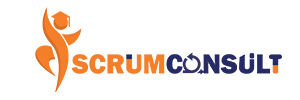Introduction
In today’s fast-paced world, the ability to swiftly adapt to changing circumstances while maintaining a solid and reliable foundation is crucial. This delicate balance between agility and stability can determine the success and longevity of organizations, technologies, and even personal development. Let’s explore why balancing these two seemingly contrasting qualities is essential and how to achieve it.
The Importance of Agility
- Adaptability and Innovation: Agility is the capability to pivot and adapt quickly in response to new information, market trends, and unforeseen challenges. It fuels innovation, allowing organizations to seize new opportunities and stay ahead of the competition. In personal development, agility translates to continuous learning and the ability to adjust goals and strategies as circumstances change.
- Navigating Change: The modern landscape is characterized by rapid technological advancements and evolving consumer preferences. Agility enables organizations to navigate these changes effectively, ensuring they remain relevant and competitive. It’s about being proactive rather than reactive.
- Customer Responsiveness: Agile organizations can respond to customer needs and feedback promptly. This responsiveness builds customer trust and loyalty, as clients feel heard and valued.
The Necessity of Stability
- Reliability and Consistency: Stability provides the backbone for operations. It ensures that processes are reliable, consistent, and efficient. In a stable environment, there is a clear direction and a sense of security, which is essential for long-term planning and execution.
- Risk Management: Stability helps in managing risks by maintaining control over processes and minimizing disruptions. It ensures that while an organization is agile, it doesn’t become chaotic and unpredictable.
- Employee Satisfaction: For employees, stability translates to job security and a clear career path. A stable work environment reduces anxiety and fosters a sense of belonging and loyalty.
Striking the Balance
Balancing agility and stability is about integrating the strengths of both approaches. Here are some strategies to achieve this balance:
- Develop a Flexible Framework: Create a framework that allows for flexibility within a stable structure. For example, establish core processes and guidelines that remain consistent while encouraging innovation and adaptability within those boundaries.
- Empower Teams: Foster a culture of empowerment where teams are encouraged to be agile and make decisions swiftly. At the same time, ensure there are clear roles, responsibilities, and support systems in place to provide stability.
- Invest in Continuous Learning: Encourage continuous learning and development for employees. This not only enhances agility but also equips the workforce with the skills needed to maintain stability in their roles.
- Regularly Review and Adjust: Implement regular reviews of processes and strategies to ensure they remain relevant and effective. Be willing to adjust and refine them in response to new information or changing circumstances.
- Maintain Open Communication: Communication is key to balancing agility and stability. Ensure transparent and open lines of communication across all levels of the organization. This helps in aligning everyone with the organizational goals and facilitates quick responses to changes.
Conclusion
Balancing agility with stability is not a one-time effort but an ongoing process. It requires a thoughtful approach to integrate the dynamic capabilities of agility with the solid foundation of stability. By achieving this balance, organizations and individuals can thrive in a constantly evolving environment, ensuring sustainable success and growth. Remember, it’s not about choosing one over the other but finding the harmony that allows both to coexist and complement each other.
To learn more about Scrum Master Certification in Lagos, Agile Expert, Project Management, Product Owner, Lean Six-sigma Green belt, Lean Six-sigma Black belts, SMC, PSM and CSM, kindly visit scrumconsult.com

